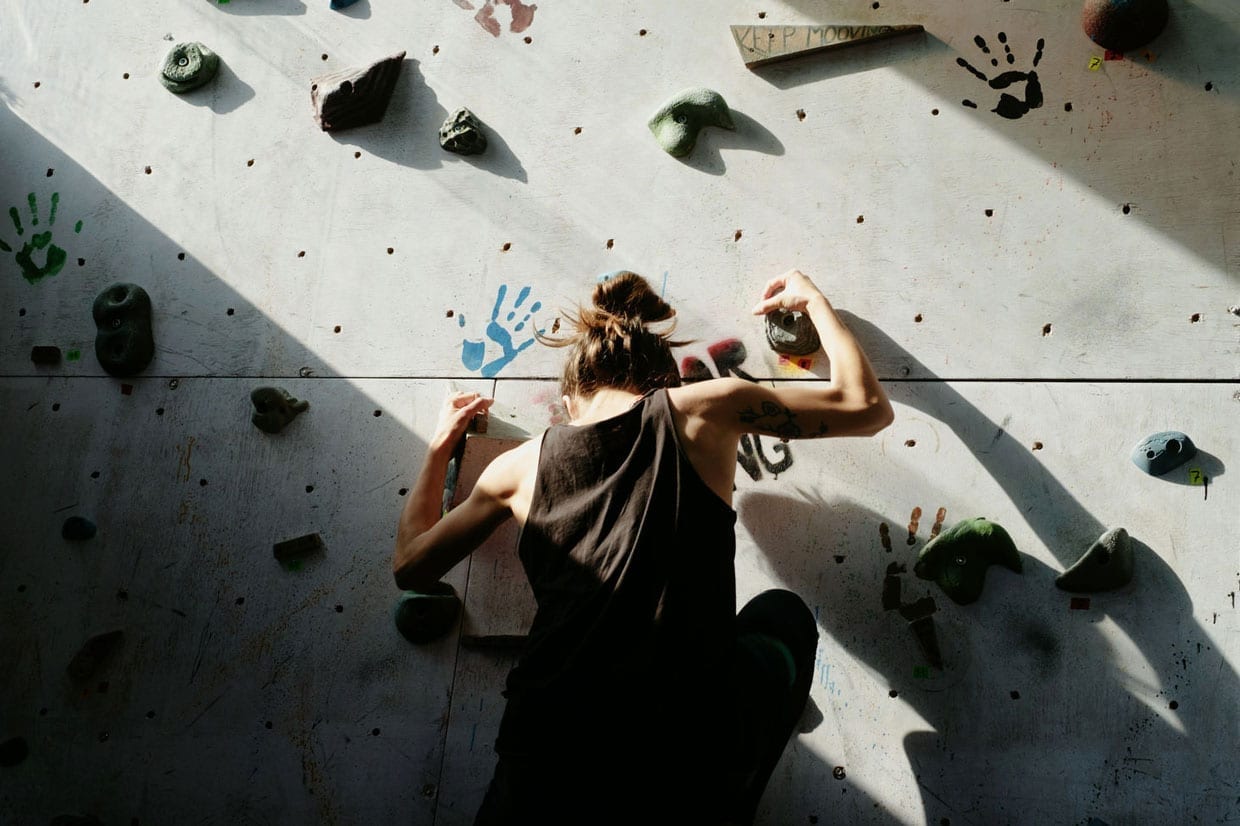You remember rock-climbing, right? That birthday party activity we did when we turned nine in grade school? Well it has been making a comeback. On Aug. 3, 2016, the International Olympic Committee (IOC) announced that Sport Climbing will feature for the first time at the next 2020 Olympic Games in Tokyo. The decision came at the heels of a desire to appeal to a younger audience, and the climbing event will feature 40 climbers competing over three disciplines: sport, bouldering and speed. Maybe because of this or maybe because a bunch of celebs are doing it too, (Zac Efron, Jared Leto, Brie Larson, among others), the industry is essentially exploding. The Climbing Business Journal that 43 new climbing gyms opened in the U.S. in 2017 alone (2018 numbers are still incoming), which amounted to a growth rate of 10 percent, in contrast to only six percent in years prior.
If you still have not strapped on and ascended a wall, there are many reasons why you should, and it is no surprise that the masses have been turning to this full-body workout to meet their fitness goals. Several researchers have declared it one of the best full-body workouts, and according to the Journal of Human Kinetics, the dynamic muscle activation associated with its variety of movements is more challenging than the simple, repetitive movements one would do at the treadmill or weight-lifting class.

I personally fell in love with rock-climbing when I was a sophomore in college. Most every night of the week saw me at the gym, muscle-ing my climbing shoes on (a workout in it of itself), and chatting idly with whoever else had made it out that night. Among discussions about the latest set route that had everyone scratching their heads, the entire experience always involved a lot of banter about how to best tackle the “problem,” a lot of chalk, and a lot of shouted encouragement. At points, the entire spectator crew would start watching and yelling suggestions as to what my next move should be. I loved the support and the lack of judgment when, alas, my hands gave out and I failed to make the next handhold.
The interesting thing is that more than a physical challenge, rock-climbing — or its sister sport, bouldering, which entails climbing on lower walls or rock formations without a rope — offers mental challenges. In each color-coded climbing route, both on bouldering or a roped wall, you encounter multiple problems, ranging from, “Do I have the courage to go for that hold?” to “Can I even get my foot up that high to continue?” All of which nurture a sense of grit on top of muscle definition, flexibility and balance. “It’s a really great way to relieve stress in an active, positive manner — especially bouldering since it allows you problem solve on the fly because you’re only climbing 15 feet,” says Joey Luna, general manager at Momentum Climbing Silver Street in Houston. “Then, on top of that, you get the physical health benefits that come along with that: You’re using your legs, your arms, your core — sometimes you climb upside down — just to keep yourself on that wall. It’s actually using a lot of muscles that most people aren’t used to using.” It is easy to burn anywhere from 500-900 calories rock-climbing, plus research also suggests it builds strength, power and aerobic and anaerobic fitness.
You encounter multiple problems… all of which nurture a sense of grit on top of muscle definition, flexibility and balance
It is normal for the first-timers to only last about an hour because they do not expect to get that kind of workout and physicality out of it. But the reality is that it is almost the first time you discover you have muscles in your fingers and forearms you have not used since the time you did three pull-ups at the gym last week. “You find yourself pushing and pulling more than you’d think,” Luna adds. “You’re using your triceps quite a bit, your back and core are always engaged because they’re those stabilizer muscles that fire at all times when you’re shifting your weight constantly from left to right — and even supporting all your weight on your hands sometimes. You also find that a lot of your leg muscles that you didn’t expect to use are engaged when you’re climbing.”
Most climbing gyms have the proverbial walls, but also full-service gyms where members can cross-train with rowing machines, treadmills, weights and more. At Momentum, a yoga program is also offered to help climbers increase their flexibility and breath control. It has been scientifically proven that cross-training helps with any kind of athletic training, and climbing is no different. It is important to work the oppositional muscles; if you are pulling a lot, then a few push-ups do not hurt.
What else does not hurt? The sense that you are a part of something bigger than yourself. I am not talking about the 15- to 52-foot walls or boulders you are climbing, but the climbing community you are joining. In this space everyone supports each other, and, as they yell from their comfortable spot on the floor as to how I should tackle my next move, they will do the same for you. “That is one of the greatest things about rock-climbing,” adds Luna. “I’ve been climbing for over ten years, and I’ve got to climb with the ‘Michael Jordans’ of my sport and they’re very humble people, men and women who are just at the same mountain that you’re at, the same crack, and you just kind of talk and build a friendship that’s based on a unique bond that you share as far as love of rock-climbing.”

For a lot of people, indoor climbing is just a means to eventually get outside and climb on real rocks, which ties in with the bigger movement to get on outside and reap the tremendous amount of benefits from just spending time in nature. But that is a different animal in it of itself. “When I first started climbing, there weren’t that many gyms, so you climb at friend’s garages or outside,” Luna says. “But seeing the growth of the sport lately, there are tons of people now who solely climb in a gym and that’s it. They use it as their community place, and that’s just how the sport is growing. There are definitely people who see it as the means to an end to the kind of get outside and start climbing eventually, but there are people who just enjoy climbing inside and getting the health benefits that it comes with and then going home.”
No matter how you decide to approach it, one thing is certain: It is easy to get started. All you need is a pair of shoes and a chalk bag. Tack on a harness and a partner if you go the top-rope route. But the reality is that unless you start going religiously and become serious about it to want your own, most gyms have all of these for rental. If you are going to top-rope, gyms also have belay devices for rent. With more than 400 rock-climbing gyms in the U.S. alone, you are bound to find a home.
We only recommend products we have independently researched, tested, and loved. If you purchase a product found through our links, Sunday Edit may earn an affiliate commission.







